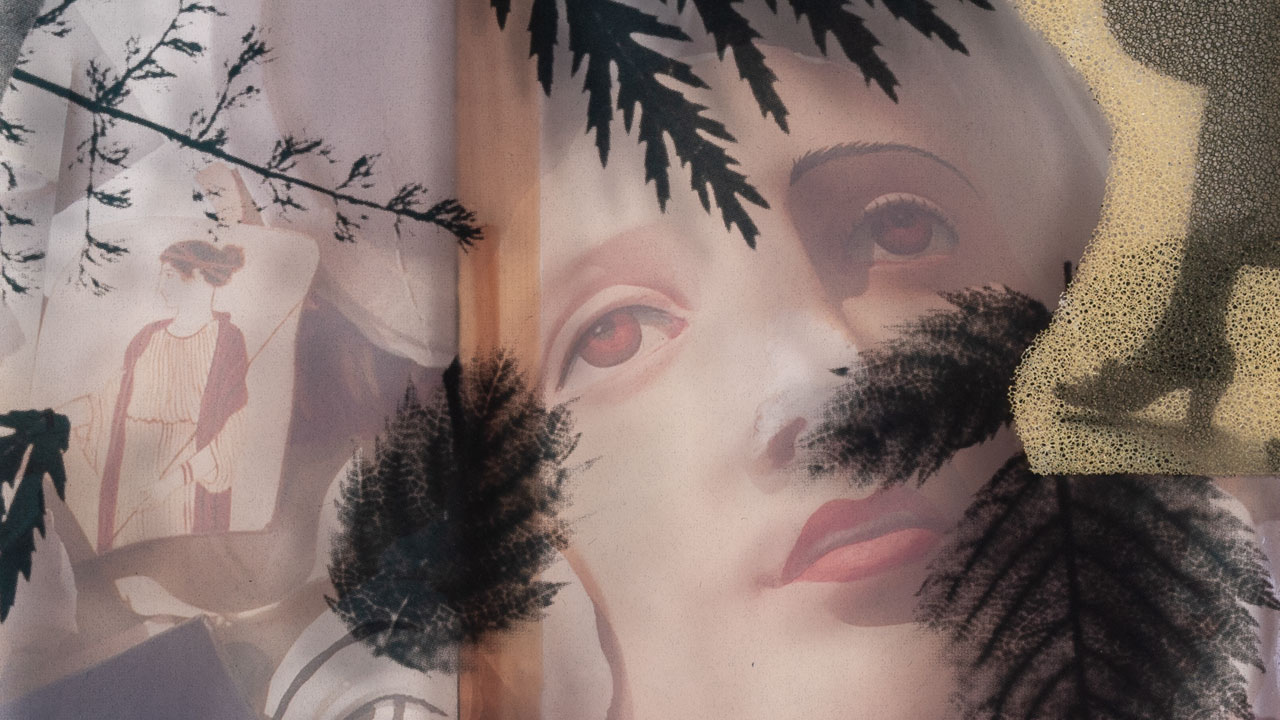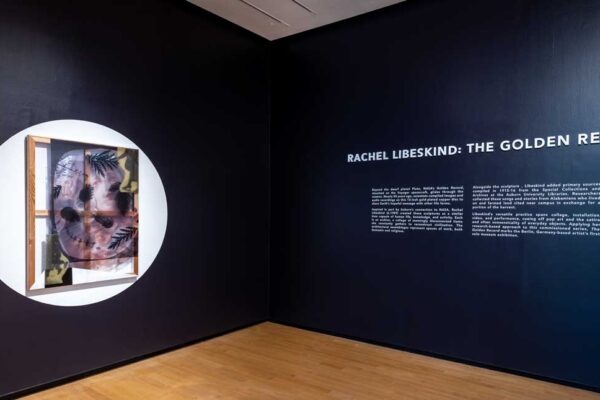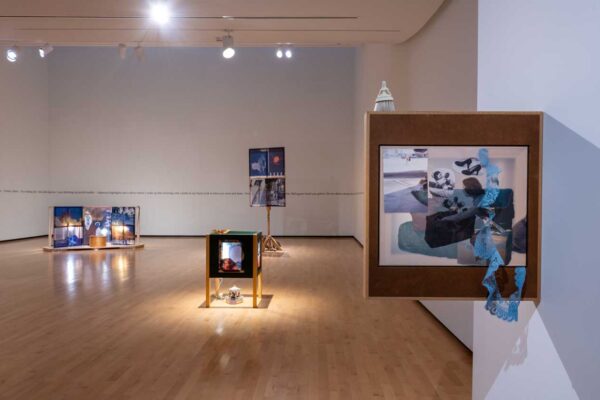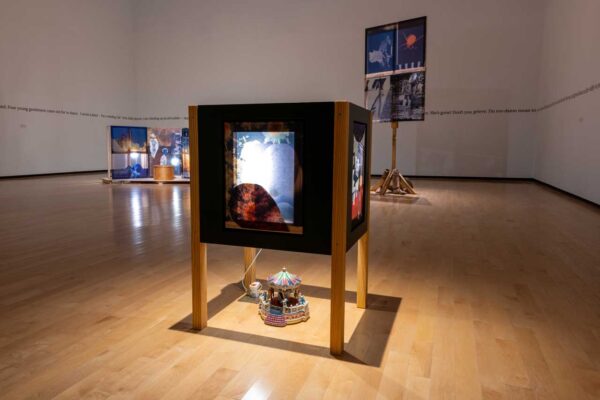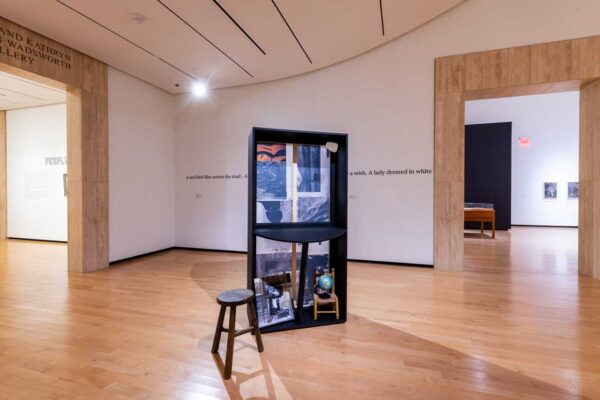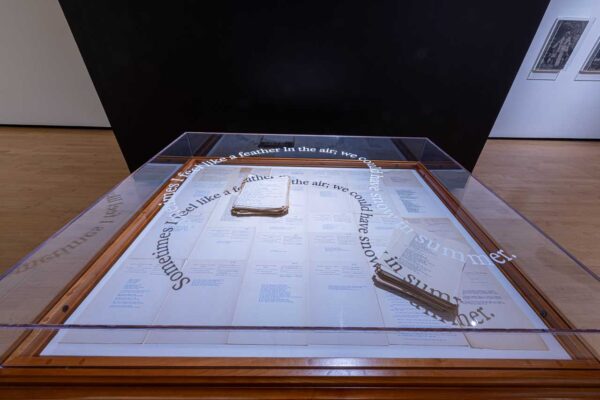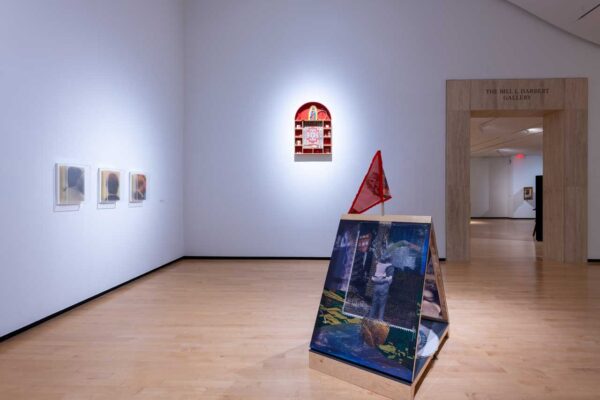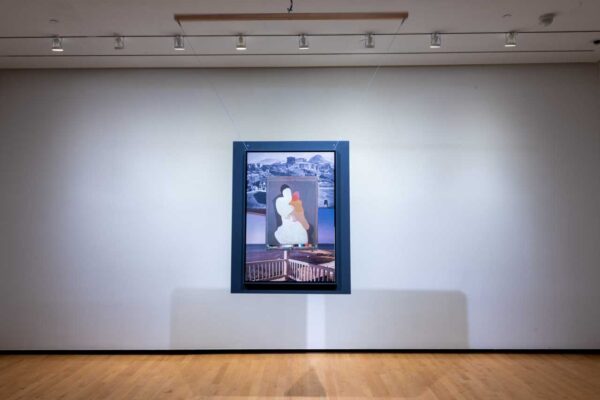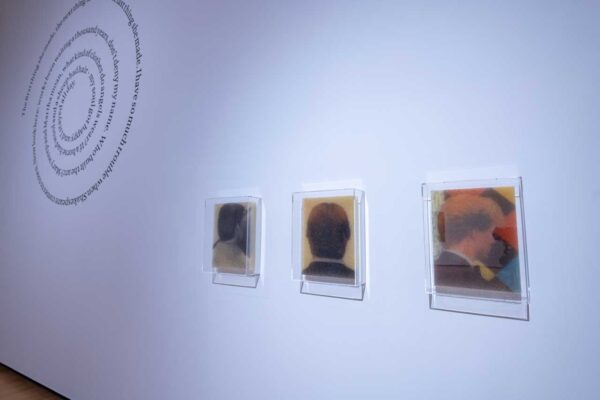On view through Sunday, Dec. 8, "The Golden Record" features university archives and mixed media.
Within the Auburn University Libraries Special Collections and Archives, artist Rachel Libeskind searches for inspiration for what will be her first solo museum exhibition at The Jule Collins Smith Museum of Fine Art. In her words, she is hunting. An artist who constantly collects and incorporates everyday objects into her work, she favors things like vintage car parts, classroom globes and books over traditional media of paint or clay. She uncovers a non-descript gray archival box with about 800 hand-typed pages. The transcriptions are from an early 20th-century research project by Newman Ivey White, Ph.D. from the English department of what was then Alabama Polytechnic Institute, now Auburn. The pages in the box are tissue-thin, yellow and slightly frayed with time, featuring exacting blue type.
“My point of departure is always an existing archive or existing objects from which I am able to spin a web of stories and narratives and images and aesthetic,” Libeskind said.
Carefully typed upon the page are superstitions, songs, sayings and lore. Between 1915 and 1916, White enlisted API students to gather these narratives from citizens, Black singers, sharecroppers, and blue-collar workers, as well as others incarcerated in the convict leasing system across Alabama and in and around the university. The documents list the speaker and the settings where the interviews took place. From a Black church in Auburn: “Give me that good ol’ time religion, it’s good enough for me. It’s good enough for me when the world is on fire.”
After his tenure at API, White continued collecting first-person accounts of the South as a professor at Duke University. His documentation and later publications played a vital role in the institutional canonization of African American folklore.
Before this latest museum research project, the head of Special Collections and Archives said White’s documentation received little attention beyond periodic requests. “Rachel’s interest in the materials spurred us to support their digitization,” said Greg Schmidt. “I hope that Rachel’s engagement and exhibition, as well as the podcast, will bring more attention to these papers.”
"Works been waiting for a thousand years [sic]"
After nearly two years of ideation and alternating days of studio work alongside other projects, key lyrics and phrases from the transcripts wrap the walls of the Bill L. Harbert Gallery and Gallery C in a work entitled “Meditation on Superstition.” The documents are displayed stacked in a case alongside her artwork. Libeskind reconstructs the text as poetry, pulling phrases together like the various objects she has grouped as sculptures in “The Golden Record.” The exhibition is programmed during the museum’s yearlong thematic consideration of work, referenced in The Auburn Creed and representing the human effort that fosters innovation.
“I was interested in, first and foremost, being site-specific to this museum and to this place and this land,” Libeskind said.
The exhibition’s title and new works come from her research-based approach to the museum commission and Auburn’s NASA connection through Huntsville’s Marshall Space Flight Center. Nearly 50 years ago, scientists compiled pictures and audio recordings on two 12-inch gold-plated copper discs to share Earth’s hopeful message with other life forms. Known collectively as The Golden Record, the discs are aboard Voyager 1 and 2, on a mission to explore the outer solar system and beyond. Presently, the crafts are in interstellar space beyond the dwarf planet Pluto.
“[The record] has pictures of the conception of life, literally incredible images of cells, pictures of the world, and all sorts of different diagrammatic [representations] without language to show all the pillars of our world and society.”
Similarly, Libeskind juxtaposes recognizable images and objects: space shuttle launches and the Great Sphinx of Giza are paired with a hatbox and a cane. While her practice spans collage, installation, video and performance, this is Libeskind’s first foray into sculpture.
“You walk around them, and they have many different layers and elements that are supposed to represent the different pillars of civilization,” Libeskind said. “So, that would be things like the home, the school, the church, the state, the confessional, the voting booth—the interiority of being in all the different ways we inhabit our worlds.”
“Rachel Libeskind asks us to consider what insights we might discover about humanity from what is left behind, including discarded objects, stories and music,” said Cindi Malinick, museum executive director. “The Golden Record is a prime example of how The Jule, as a university art museum, contributes to Auburn’s creative scholarship through cross-disciplinary projects. Presenting findings as an exhibition publicly showcases new knowledge for faculty and students in any course of study.”
This semester, Libeskind’s collaboration with the museum also included class visits with sculpture and printmaking students in the Department of Art and Art History and an in-person and virtual public program with associate professor of art history Kathryn Floyd, Ph.D.
Libeskind said she hopes that each sculpture references shared human experiences. “No matter where you come from, your story, or where you live, we all know exactly what those pillars are and the strange ways they overlap.”

